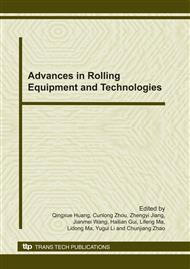p.526
p.533
p.537
p.541
p.546
p.551
p.557
p.562
p.567
Intelligent Design of the Hydraulic Manifold Blocks Based on Rule-Based Reasoning
Abstract:
Design of hydraulic manifold blocks is a kind of complex solid special layout problem. Due to the complexity of the manifold blocks layout, intelligent optimization design system of the hydraulic manifold blocks is presented based on rule-based reasoning. The key of the manifold design is the hole’s connection, and the special layout of manifold is introduced. Based on the relative position and connection relationship of the holes, special mathematic model and rule-based reasoning are proposed for the holes layout and connection design. Rule-based reasoning which is used to guide algorithm search direction is proposed according to the holes special location. Goal actuation control strategy is adapted to search a group of optimization solution which is satisfied with the connection requirement. An example of hydraulic cartridge manifold block of high-speed bar cutting machine is given. It is testified that single line net algorithm satisfies the design requirement of real time checking, the shortest connection route and minimum number of craft hole.
Info:
Periodical:
Pages:
546-550
Citation:
Online since:
October 2010
Authors:
Price:
Сopyright:
© 2011 Trans Tech Publications Ltd. All Rights Reserved
Share:
Citation:


